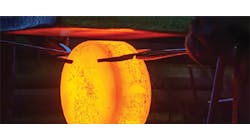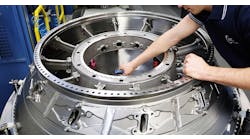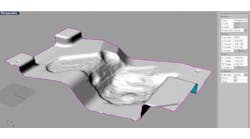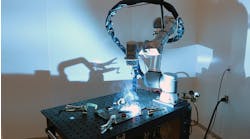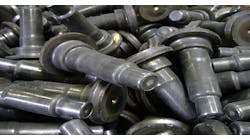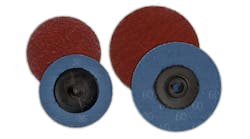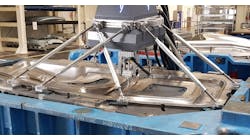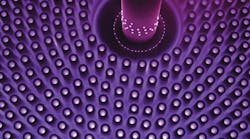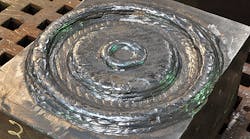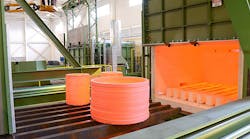Forging die failure is a multi-dimensional problem for forging operators, one that slows production, degrades the quality of finished parts, increases the cost of tools and dies, and incurs the time and cost of equipment repairs, among various problems. According to Advanced Heat Treat Corp., a survey of forging operators recently reveled that as the batch sizes increase, machine set-up costs will go down but tooling costs will rise.
Various thermal processes are used industrially to improve the wear-resistance of die tooling, and now optimizing the performance of forging dies is the technological challenge driving a research program that AHT has undertaken with The Ohio State University’s Manufacturing Research Group: “Plasma Enhanced Nanostructures for Improved Life of Forging Dies.”
“Nitriding” is a heat-treating process in which nitrogen is diffused into a metal surface, e.g., a forging die face, to achieve a case-hardening effect. Low-carbon or low-alloy steel surfaces are typical, but the method is used on various other materials too, including medium and high-carbon steels, titanium, and aluminum.
Whereas gas atmospheres are the standard medium for nitriding, AHT contends that the advantages of gaseous nitriding processes can be surpassed by plasma nitriding (or ion nitriding), in which plasma is used as the heat-treatment medium, to achieve thermochemical case hardening on an industrial scale, to increase wear resistance, surface hardness, and fatigue strength.
Plasma nitriding is a low-pressure process in which voltage is applied between the batch and the furnace wall. A glow discharge with a high ionization level (plasma) is generated around the parts. On the surface area that is directly charged by the ions, nitrogen-rich nitrides are formed and then decompose, releasing active nitrogen into the surface. This means that the need for shielding concerned areas can be addressed by covering them with a metal blanket.
Typical applications for plasma nitriding include high-value forgings like gears, crankshafts, camshafts, cam followers, valve parts, extruder screws, and pressure diecasting tools, as well as drivetrain and engine parts. For higher-alloy steels — like tool and die materials — plasma nitriding imparts a high surface hardness, which promotes high resistance to wear, scuffing, galling and seizure.
Also, plasma nitriding allows modification of the surface according to the desired properties. Customized layers and hardness profiles can be achieved by adapting the gas mixture. Whether the desired results is a surface with low nitrogen, up to 20 microns thick, or a compound layer with high nitrogen contents and an add-on of carbonic gas (plasma nitro-carburation), plasma nitriding makes these results possible.
According to AHT, in addition to forging, plasma nitriding is used to generate a hard case on surfaces to enhance performance of many tribological components. It noted the process has been applied to achieve advanced surface compositions for corrosion protection in aerospace materials, electronics and power systems. In addition, plasma nitride surfaces are being investigated for alternate power generation, e.g., as fuel cells, and in human implants.
AHT and OSU announced their research program in August 2015, and they received $99,391 from the U.S. Small Business Administration (SBA) Small Business Innovation Research (SBIR) Program, and Defense Technical Information Center (DTIC) to carry out the project. Their research is focused specifically on using plasma to enhance nanostructures on die surfaces, and they contend the process may help to increase die life up to five times the current usage or service life.
Phase I of the research was completed April 30. A summary of the Phase I findings was issued to the Missile Defense Agency for review, and copies of that summary are available from AHT.
“We are very pleased with the results from Phase I and look forward to further developments with plasma enhanced nanostructures,” stated Mike Woods, AHT’s senior vice president. “We are confident that this new technology will not only provide benefits to the forging industry, but also tool-and-die, stamping, and other industries, as well.”
